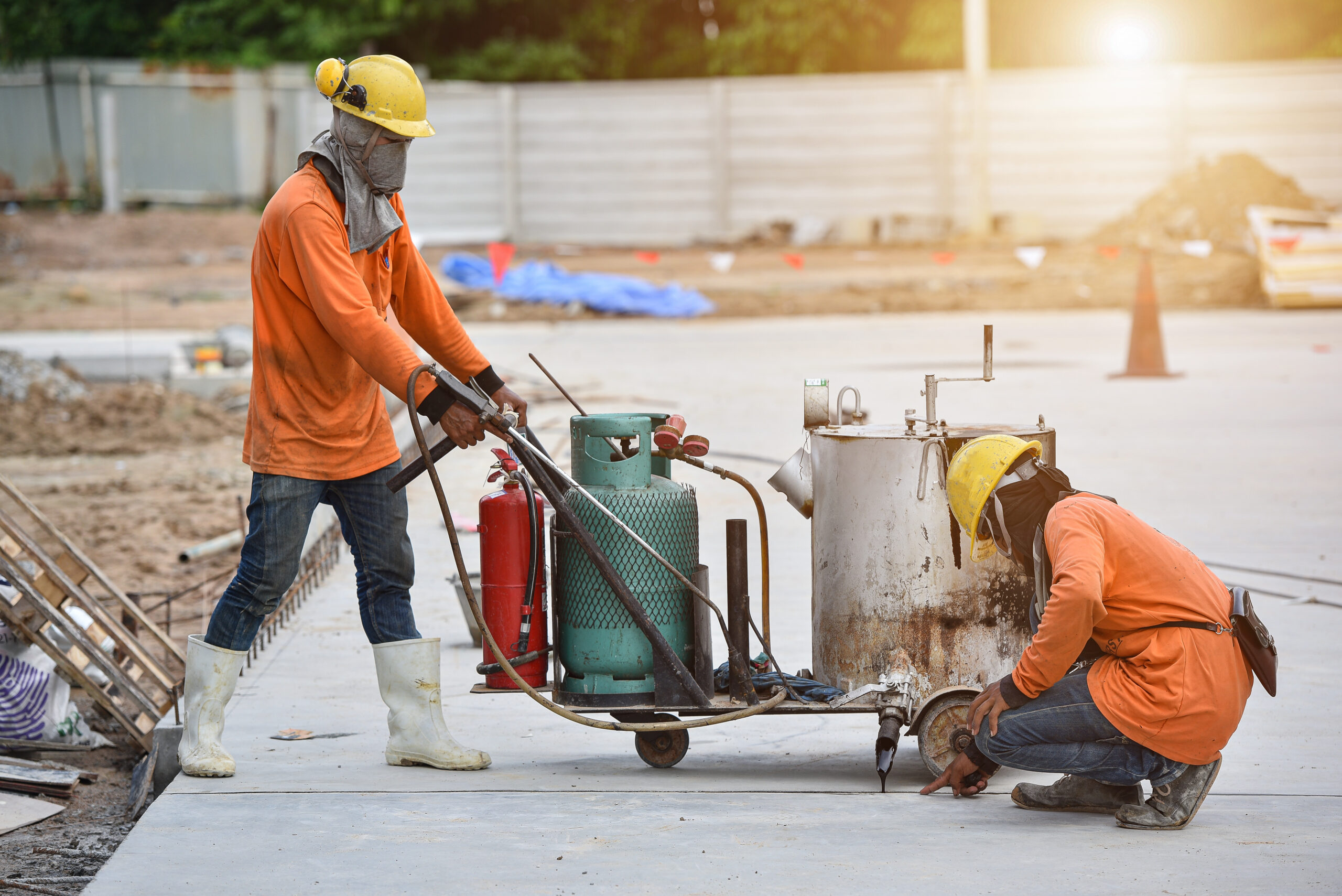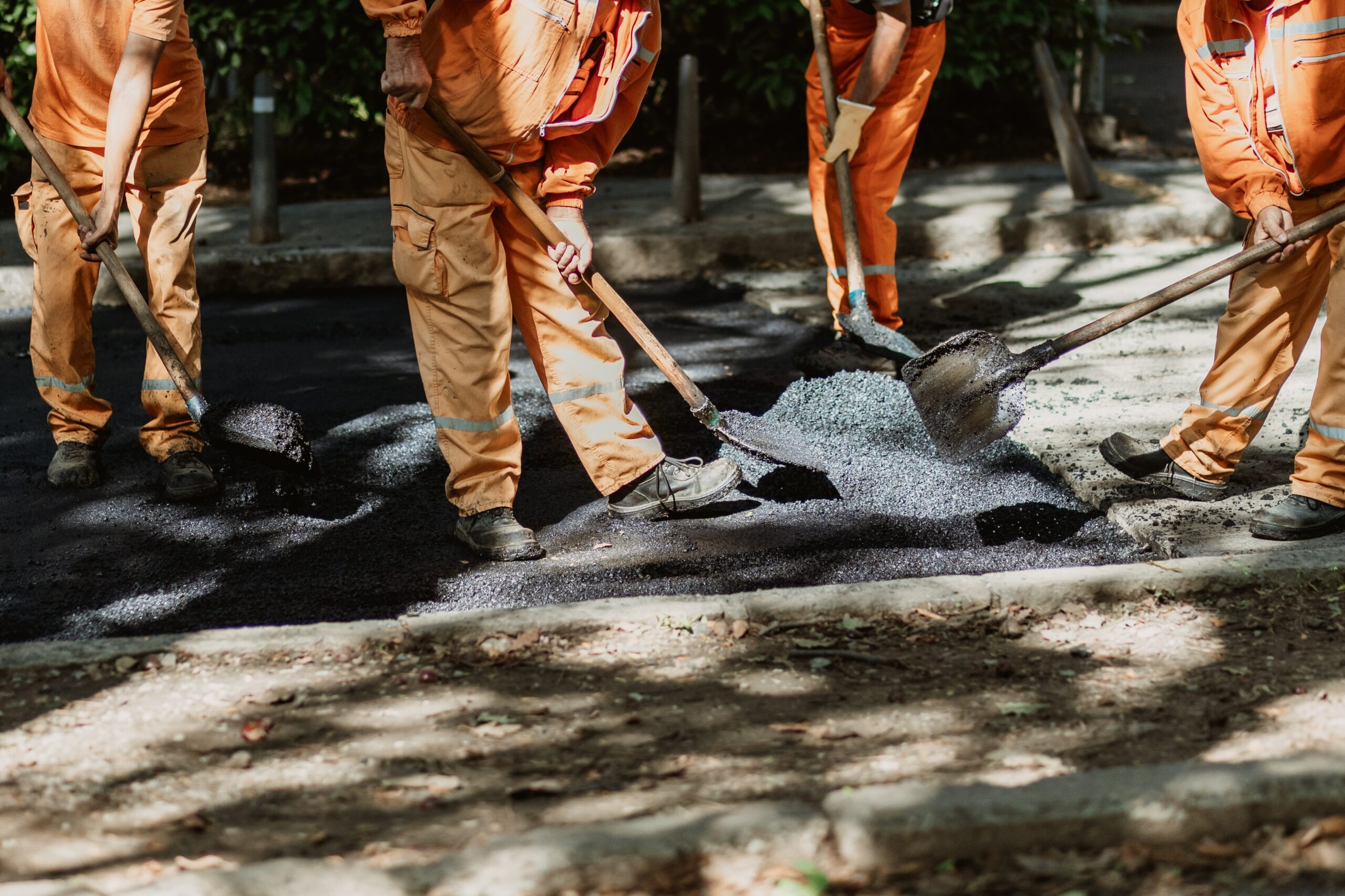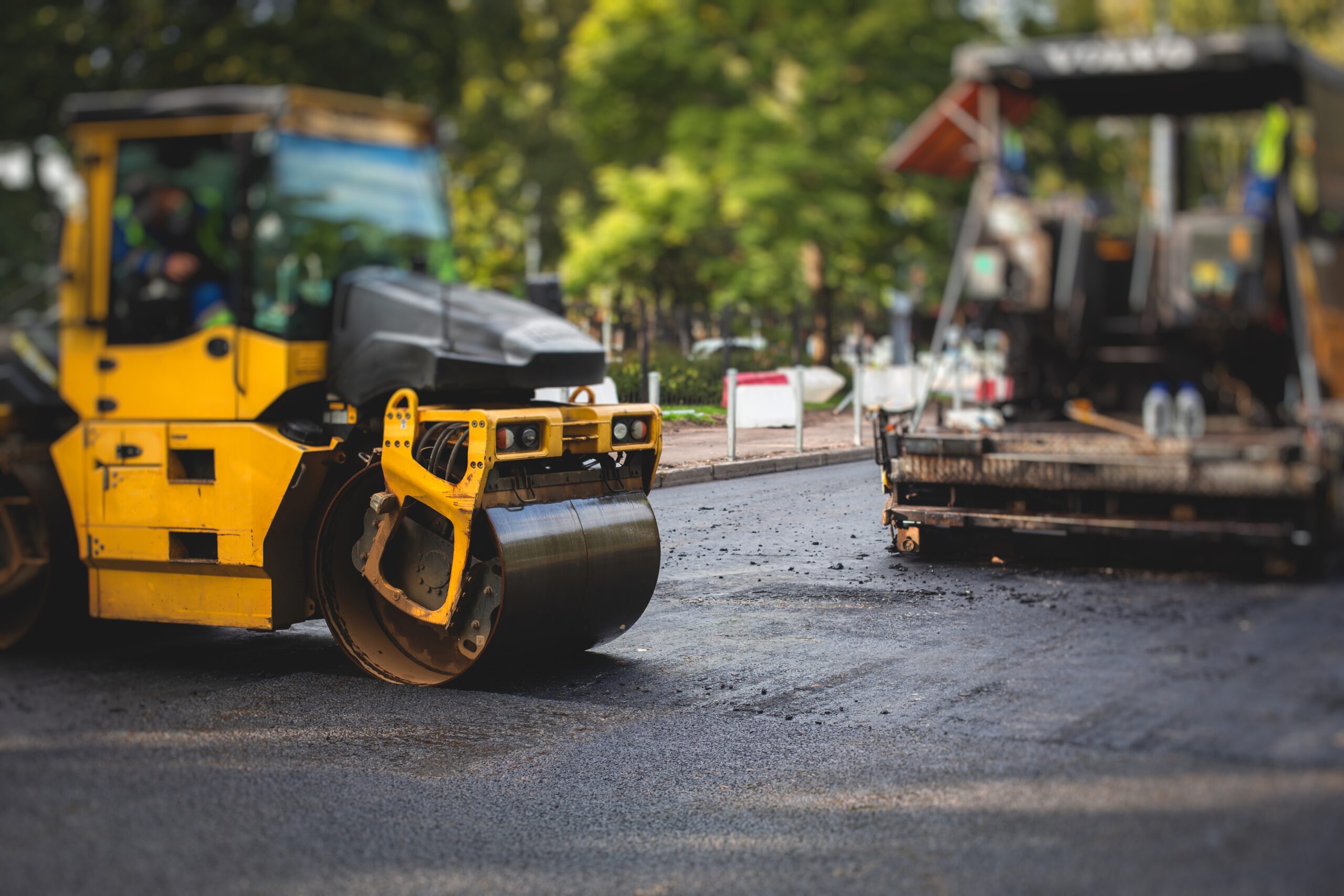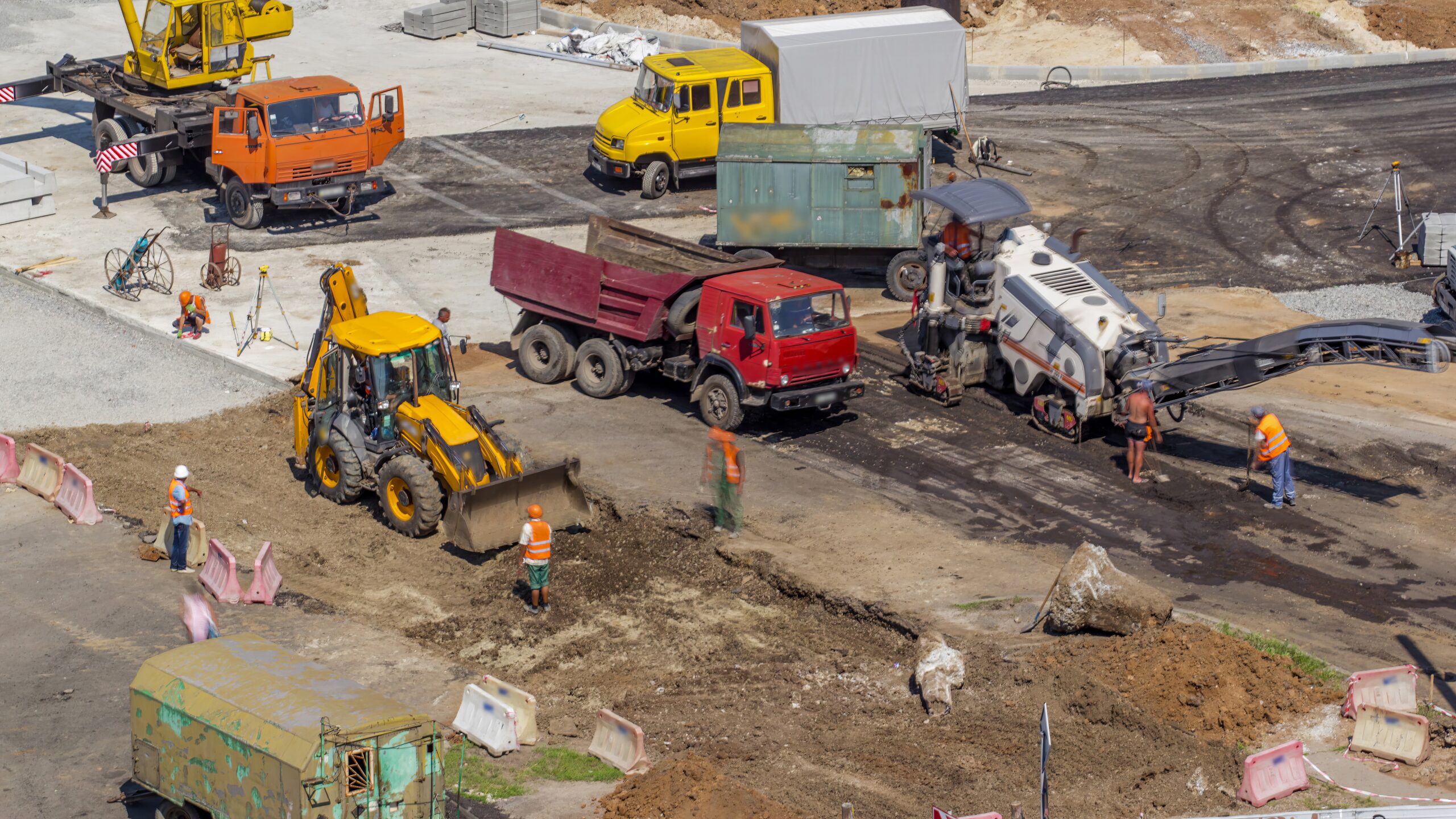
When asphalt surfaces start showing signs of wear, most property owners ask one question: Should I seal the cracks or patch the pavement? Choosing the wrong method can waste time and money. It can also leave your surface vulnerable to future damage. The short answer is, Use crack sealing for early-stage damage and patching for deeper failures. Both techniques serve different purposes. Knowing when to use each saves on long-term costs and extends pavement life.
Let’s break down the difference between crack sealing and patching, and when each solution makes the most sense:
What Is Crack Sealing and When Should You Use It?
Crack sealing services is a preventive maintenance process designed to stop surface cracks from growing into larger problems. Technicians clean the affected area, then fill the cracks with a rubberized sealant that expands and contracts with temperature changes. This keeps moisture out and helps protect the base layers of the pavement.
Crack sealing is most effective when used on asphalt that is still structurally sound but shows signs of early deterioration. These cracks are usually narrow, less than ¾ of an inch wide, and are not interconnected. They often appear from aging, sun exposure, or traffic stress. Left untreated, these cracks allow water to seep in, freeze during winter, and widen the gap, leading to potholes and base damage.
If your asphalt still looks good overall and just has isolated cracks, sealing is the most cost-effective solution. It’s also quick to apply and cures fast, which keeps disruptions minimal. When done correctly and on time, it can extend the pavement’s life by three to five years and delay costly reconstruction.
What Is Patching and When Is It Necessary?
Patching is a reactive repair method used when the asphalt surface or base has already failed. This process removes the damaged area entirely including any unstable material underneath and replaces it with new asphalt. There are different patching techniques, including full-depth patching for severe damage or surface patching for moderate wear.
Patching becomes necessary when you see signs of advanced failure. This includes pothole prevention, alligator cracking (a network of deep interconnected cracks), sinking areas, or spots that stay wet after rain. These symptoms show that water has already penetrated the subbase and caused erosion or material loss beneath the surface.
Unlike crack sealing, patching is not preventive but restorative. It’s the only effective method once damage has reached the point where sealing would no longer help. While patching costs more per square foot and takes longer to complete, it restores structural integrity and ensures the area can handle traffic loads again. When done properly, patched areas can last five to ten years depending on materials, climate, and usage.
Key Differences Between Crack Sealing and Patching
Although both techniques are essential to asphalt maintenance, they serve very different purposes. Crack sealing protects good pavement from future damage. Patching fixes already-failed sections. Choosing the wrong method may not only waste your budget but allow damage to spread faster.
| Feature | Crack Sealing | Patching |
| Purpose | Prevent water infiltration | Replace failed pavement and subbase |
| Ideal Condition | Small, early-stage cracks | Structural damage, potholes, and deep cracks |
| Depth of Repair | Surface-level only | Full-depth if needed |
| Time to Complete | Usually within a few hours | Varies by depth and square footage |
| Average Lifespan Added | 3–5 years | 5–10 years |
| Disruption to Traffic | Minimal | Moderate to significant |
| Cost per Square Foot | Lower | Higher |
| Equipment Used | Basic sealing tools | Milling, saw-cutting, and heavy paving machines |
Given below are their differences in detail:
- Purpose
Crack sealing is a preventive maintenance technique used to stop small surface cracks from growing. It protects the asphalt by preventing water infiltration. Patching is a corrective repair method that restores failed or damaged pavement by removing and replacing compromised asphalt.
- Type of Damage Treated
Crack sealing treats narrow, non-structural cracks typically less than ¾ inch wide. It works best on pavements that are still intact beneath the surface. Patching addresses structural damage, such as potholes, wide or deep cracks, alligator cracking, and base failures.
- Timing of Application
Crack sealing is applied early in the damage cycle, ideally before water or debris causes subsurface erosion. Patching is used after significant damage has occurred, once surface deterioration compromises the pavement’s strength or safety.
- Depth of Repair
Crack sealing works at the surface level only. It does not address issues beneath the top layer. Patching may require full-depth removal, especially when the subbase has failed or eroded, ensuring a stronger and longer-lasting fix.
- Durability and Lifespan
Crack sealing can extend pavement life by 3 to 5 years, especially when applied consistently. Patching offers 5 to 10 years of durability, depending on traffic volume, material quality, and weather conditions.
- Cost Per Square Foot
Crack sealing is generally more affordable because it involves less labor, fewer materials, and minimal equipment. Patching is more expensive per square foot due to the complexity of the repair and the use of heavy machinery.
- Repair Time and Disruption
Crack sealing is quick to complete and causes minimal disruption to traffic or daily operations. Patching is more time-intensive, especially for large or deeply damaged areas, and may require lane closures or downtime.
- Tools and Equipment Used
Crack sealing typically uses melters, air blowers, and hand applicators. Patching requires saws, milling machines, rollers, and pavers, making it more labor- and equipment-intensive.
- Best Use Case
Crack sealing is ideal for preventing future damage on otherwise healthy asphalt surfaces. Patching is best used when you need to restore failed sections and prevent further deterioration of compromised pavement.
Each repair serves a different point in your pavement’s lifecycle. Crack sealing is best used consistently as a part of an annual or bi-annual maintenance plan. Patching becomes essential when damage spreads beyond the surface and safety is at risk.
Which Asphalt Repair Is Better?
There’s no one-size-fits-all answer. The best asphalt repair depends on the current condition of your pavement. Crack sealing is better when the damage is superficial and spread across large areas. It helps preserve the overall integrity of the asphalt and prevents water from doing deeper damage.
Patching is better when specific sections have already failed, especially if potholes or subsurface erosion are present.
In many situations, the smartest solution combines both techniques. For example, you may need to patch potholes in high-traffic zones while sealing early cracks in other sections of the same lot. This strategic mix extends your surface’s life without needing full replacement. It also helps budget asphalt repair work more efficiently over time.
To make the right choice, it’s essential to inspect the pavement thoroughly and identify the types of damage and their severity. That’s where expert evaluation can make a big difference.
FAQs
When should I choose crack sealing instead of patching?
Choose crack sealing when your asphalt has small, narrow cracks under ¾ inch wide, and the pavement is still structurally sound. It’s ideal as preventive maintenance before deeper damage occurs. This method helps stop moisture from weakening the base layer over time.
How do I know if my asphalt needs patching?
If your pavement has potholes, alligator cracks, or sunken areas that retain water, patching is required. These signs indicate subbase failure that sealing cannot repair. Patching restores structural integrity and prevents safety risks from worsening.
Is crack sealing cheaper than patching?
Yes. Crack sealing costs significantly less per square foot than patching. It also requires less labor and equipment, making it more cost-effective for early-stage damage. Routine sealing also delays the need for major repairs.
Can I use both crack sealing and patching on the same lot?
Yes. Many asphalt surfaces benefit from a combined approach — patching failed areas and sealing surface cracks elsewhere. This extends overall pavement life and improves performance. It’s a smart strategy for managing budgets over time.
How long do crack sealing and patching repairs last?
Crack sealing extends pavement life by 3–5 years when properly applied. Patching can last 5–10 years, depending on materials used, traffic volume, and climate exposure. Lifespan increases significantly when combined with proper maintenance.
Keep Your Pavement Strong with the Right Repair Choice
The smartest asphalt repair choice depends on proper assessment. Crack sealing works as early protection. Patching restores strength after deeper failure. At Asphalt Coatings Company, we inspect, plan, and deliver the right solution using over 40 years of experience in challenging climate. If you need help deciding between sealing or patching, Contact Asphalt Coatings Company for a free inspection and tailored repair plan today.



